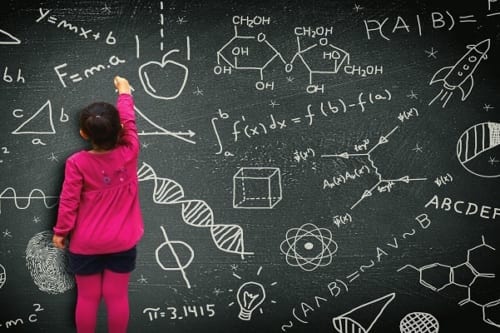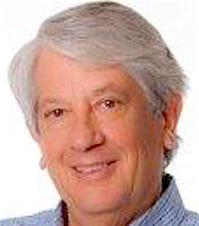Table of Contents
Instruction plus experience equals education
By Mac Bogert
 Mrs. Miller was my fifth-grade teacher. Both of my sisters had passed through her justifiably famous hands. She was an imposing, loved, and feared presence. We did okay together, even though my sisters’ reputation for politeness and manners was not present in equal measure for yours truly.
Mrs. Miller was my fifth-grade teacher. Both of my sisters had passed through her justifiably famous hands. She was an imposing, loved, and feared presence. We did okay together, even though my sisters’ reputation for politeness and manners was not present in equal measure for yours truly.
Like all my best teachers, Mrs. Miller apparently knew everything. She was sort of the internet for the 1950’s.
Much has changed since. The world seems like an increasingly equivocal place. We’ve seen huge shifts in demographics, technology, economics, politics and education. It doesn’t appear that the dust is going to settle. Our schools are struggling to adapt to more changes than I could hope to list here.
Three of these changes, however, we can deal with at the classroom level to increase our own, and our students’ capacity to learn:
First, we have practically instantaneous access to all knowledge that has ever been known and recorded.
Second, we have a huge body of new information about things like neurolinguistics, brain function, and how humans learn.
Third, we have a much more ambiguous state of affairs. It may be hard to see the advantage to this one, but my own journey as a teacher took a hard turn for the better (as in more effective learning for my customers, a.k.a. students) once I accepted my own discomfort with change and embraced the possibilities it offered.
“Knowledge without wisdom is a load of books on the back of a donkey.” – Japanese Proverb
The Promise and Perils of Instant Knowledge
I research every day for my work. I have to in order to keep current. I love researching anyhow. When has research ever been this quick and powerful? If I take a little care with what I type into my search engine (and navigate pop-ups and sites that want to redirect me), I’m in the greatest of libraries.
This ease of access is not a free lunch

When we gain our knowledge through interaction with another person, we can have a dialogue. If we trust each other, we can ask questions, push back if we disagree, ask for clarification and sources. That dialogue is enriching in many ways. It increases the vibrancy of our relationship and connects us to the habit of clarifying and listening to others’ perceptions and perspectives. These are important learnings for our intellectual growth and for our social and emotional development. I’m careful to keep in touch with a cadre of friends in the learning community. We bounce ideas. In my sessions, I encourage my fellow learners to challenge me and help me develop my ideas and my thinking—every session I deliver is different by the end of the day based on their input and feedback.
So, we who teach can make clear our role as knowledge coaches. We don’t need to know everything, but we can bring our experience to bear with our students to help them be discerning and skeptical about information. Wisdom is about managing the application of knowledge. So instead of knowledge dispensers, we can become knowledge managers and help our students develop a healthy skepticism.
A couple of quick exercises
Have your students work in teams to find as many different sources of information about a topic germane to the class, say history or government, retirement planning or music. Challenge them to generate via the Web the widest possible universe of “facts” and opinions, then to have a conversation that allows for different perspectives within a framework of fact v. opinion. As their coach, you can help them focus on their differences of opinion without judgment.
 Pair your students off by differences, e.g., those who prefer a certain artist, food, or athletic team—or their stance on a topic you’re exploring. Give them a Venn diagram (two overlapping circles). This diagram has three interior spaces. Each puts her/his name on one side. The rules of the game? They list their differences on the outer sectors (Cowboys and Patriots) and must find something they agree on (both teams have top-ten quarterbacks) before they can move on. Ask them to find ten things in each sector (left, right, center). This is a great exercise to help us listen with less bias and more acceptance. When we listen with bias, we don’t learn; we merely reinforce that bias.
Pair your students off by differences, e.g., those who prefer a certain artist, food, or athletic team—or their stance on a topic you’re exploring. Give them a Venn diagram (two overlapping circles). This diagram has three interior spaces. Each puts her/his name on one side. The rules of the game? They list their differences on the outer sectors (Cowboys and Patriots) and must find something they agree on (both teams have top-ten quarterbacks) before they can move on. Ask them to find ten things in each sector (left, right, center). This is a great exercise to help us listen with less bias and more acceptance. When we listen with bias, we don’t learn; we merely reinforce that bias.
“Everybody is a genius. But if you judge a fish by its ability to climb a tree, it will live its whole life believing it is stupid.” -Albert Einstein
How We Learn
Much of my education took place in an industrial-model environment. Sitting in rows, grouped by age, all expected to learn at the same speed and the same way. Even today, I attend training events that, despite all the research, follow this model.
 A fellow by the name of Gilbert Ryle gave an important lecture in 1945. A long time ago, I’ll admit. On the other hand, Abraham Maslow’s Hierarchy of Needs surfaced about the same time, and it’s still a wonderful, useful insight. Mr. Ryle suggested there are two realms of knowledge. The first he called “knowing that.” He used the example of a child knowing that a bicycle has two wheels, inflated tires, and is powered by pushing on the pedals. This kind of knowledge is factual and what he called “propositional”—it can be proven true or false. It’s valuable, yet it does not enable a child to ride a bike.
A fellow by the name of Gilbert Ryle gave an important lecture in 1945. A long time ago, I’ll admit. On the other hand, Abraham Maslow’s Hierarchy of Needs surfaced about the same time, and it’s still a wonderful, useful insight. Mr. Ryle suggested there are two realms of knowledge. The first he called “knowing that.” He used the example of a child knowing that a bicycle has two wheels, inflated tires, and is powered by pushing on the pedals. This kind of knowledge is factual and what he called “propositional”—it can be proven true or false. It’s valuable, yet it does not enable a child to ride a bike.
“Knowing how,” the other realm of knowledge, is experiential, skill-based, and learned through doing. Rules, he suggested, “like birds, must live before they can be stuffed.” Watch your children learn how to ride up a steep hill as they stall and figure out how to lean forward and lift their buttocks off the seat. We teachers (and I’ve fallen into this trap myself) must watch for the temptation to think that “knowing how” can be reduced to “knowing that.”
What can we do about this in the classroom?
“Knowing how” occurs through experience, and it can occur independent of instruction. So we can provide our students with a baseline of knowledge and turn them loose to round out that knowledge through their own shared research (via the internet and guided dialogue). During this stage of discovery, we can offer lots of alternative paths to help everyone (including ourselves) accept and celebrate that we each learn differently. Every topic does not lend itself to multiple learning styles — art demands visual learning, music auditory. Whenever possible, we can offer our students multiple learning avenues, e.g., in groups or individually, reading or talking, speaking to the class or passing out what they’ve discovered, mentoring, and so forth.
 And we can increase opportunities for creation — making something. We know from research as well as from observation that people (children as well as tall children, aka adults) need to get their experiential brain engaged to get in the habit of tying learning to doing. Weave goals and objectives into this process; have learners work together to define how they will measure successful learning and mastery (with your guidance). When we are responsible for defining measures of achievement, we are much more highly invested in outcomes.
And we can increase opportunities for creation — making something. We know from research as well as from observation that people (children as well as tall children, aka adults) need to get their experiential brain engaged to get in the habit of tying learning to doing. Weave goals and objectives into this process; have learners work together to define how they will measure successful learning and mastery (with your guidance). When we are responsible for defining measures of achievement, we are much more highly invested in outcomes.
“The narrow-gauge mindset of the past is insufficient for today’s wicked problems. We can no longer play the music as written. Instead, we have to invent a whole new scale.” -The Designful Company, Marty Neumeier
Ambiguity and Meaning
Our instantaneous access to information is also instant access to changing information. Never before have we needed to be more discerning and skeptical. And never before have insight and meaning been more important. Sometimes it seems like what felt stable when we went to bed has morphed into chaos by dawn’s early light.
I’m a lifelong musician. I can read music, and I understand the lovely mathematics of notes and harmony. Yet I play my best when I improvise — build from a firm baseline of knowledge into an unknown and ambiguous adventure of notes, cadence and silence.
 We can help our students feel comfortable generating possibilities and answers that resonate with their experience and enrich their understanding through meaning. We can acknowledge and entertain divergence as a starting point to reach agreement, e.g., You and I see this differently; let’s talk about our differences; let’s also see where we agree. Though sometimes meaning arrives through the answer (the earth revolves around the sun rather than the other way around), we can explore the divergence of meaning: It’s funny that we all talk about the sun rising and setting as if it’s moving rather than us! What does this tell us about perspective and making sense of what we experience? How we can integrate fact with perception?
We can help our students feel comfortable generating possibilities and answers that resonate with their experience and enrich their understanding through meaning. We can acknowledge and entertain divergence as a starting point to reach agreement, e.g., You and I see this differently; let’s talk about our differences; let’s also see where we agree. Though sometimes meaning arrives through the answer (the earth revolves around the sun rather than the other way around), we can explore the divergence of meaning: It’s funny that we all talk about the sun rising and setting as if it’s moving rather than us! What does this tell us about perspective and making sense of what we experience? How we can integrate fact with perception?
It’s an exciting time to be a teacher. We needn’t fear becoming obsolete if we model foresight and courage in redefining our role: beyond knowledge.
For a brief podcast with additional insight, take a listen at https://learningchaos1243.audello.com/podcast/1/
Author
 Since 1994, Mac Bogert has been president of Aza Learning, providing innovative coaching and learning programs focused on leadership and creative thinking. He began teaching in 1971 after attending Washington and Lee University and the University of Virginia. He’s taught in a variety of schools, from elementary to college, today providing learning support for 200 clients nationwide.
Since 1994, Mac Bogert has been president of Aza Learning, providing innovative coaching and learning programs focused on leadership and creative thinking. He began teaching in 1971 after attending Washington and Lee University and the University of Virginia. He’s taught in a variety of schools, from elementary to college, today providing learning support for 200 clients nationwide.
He recently published Learning Chaos: How Disorder Can Save Education, which suggests we don’t need to make people learn but to remove the barriers that prevent learning. Mac lives in Annapolis, MD, where he works, writes, sails and plays blues guitar, though not all at the same time.
Follow Mac on Twitter.
Further Reading
- Philosopher’s Take – ‘Know How’ or ‘Know That’?
- Time.com – The Key To Learning: Knowing How Learning Works
- Wall Street Journal – Most Students Don’t Know When News Is Fake, Stanford Study Finds
